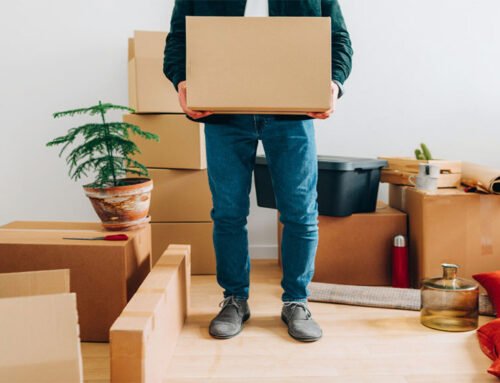Do some prep. Set a budget and checklist with a timeline. Remember to include: picking a mover; notifying employers, schools, banks, post offices, etc.; decluttering and disposing of; packing room by room; gathering essentials you’ll want immediately available; having movers prep large items, so you can use moving day to finalize last-minute details you shouldn’t forget.
Pick a mover. If you have willing, able-bodied friends and family and you can move in a day, you’ll save money moving (reducing the cost of moving labor to treat everyone to pizza!). If you can’t gather a crew—or if it’s a long-distance move with an overnight stop—it’s worth it to hire a mover who keeps your belongings secure the whole trip.
Check out the professionals. Only go with a moving company that’s bonded, insured, and gives you referrals from satisfied clients. Ask whether insurance is paid based on weight, replacement cost, or “current value.” Shop around for a company that suits your needs–it’s worth it to compare comprehensive quotes.
Declutter. Why pack, unpack, and pay to move stuff you don’t use? As you prepare your belongings for the move, ask yourself these questions: 1) When was the last time you used this? If it’s sat untouched for over a year, chuck it. 2) Do you love this? Don’t keep anything you don’t love–especially clothes. 3) Does this have meaningful sentimental value? Of course keep that wedding dress, grandpa’s pocket watch, and photo albums. Sort out anything that doesn’t meet these standards into a toss pile.
Dispose. Sell what’s not moving in a garage sale, consignment shop, or online; donate it; pass it along to someone who can use it; or, if all else fails, recycle or trash the item. Be sure to read up on how to safely dispose of hazardous materials like leftover paint.
Pack smart.
· Use quality boxes. Moving and storage companies sell them, but they usually cost less at home improvement and office supply stores. Or get them free from local stores, schools, or craigslist!
· Don’t stuff boxes—50 pounds should be your absolute max, so use smaller boxes for heavier items.
· Fill boxes full. Use packing paper, foam peanuts, or clothes to fill empty spaces. With breakables, remember to mark boxes FRAGILE.
· Use household items as packing containers—suitcases, hampers, storage bins.
· Avoid being overwhelmed–do it in steps. Pack one room at a time, an hour a day.
· Color code rooms. Use color labels on boxes and tape different colored paper at each room in the new place.
· Compact your clothing. For hanging clothes, many movers sell boxes with racks built in. Or, go the economical route and cut a hole in the bottom of a large trash bag, place it over clothes, and tie hangers together. Roll other clothes, or vacuum seal them to take up less space.
· Photograph electronics and furniture that comes apart. Before disassembling furniture, take a photo. Label all parts. Photograph backs and sides of electronics to see how to reconnect them. Label all cables. Pack in plastic bags and label screws, brackets, and miscellaneous components. It takes time, but you’ll thank yourself later!
· Carefully pack kitchen items. Use plenty of packing material—crumpled paper, bubble wrap, corrugated cardboard, dish towels, paper plates—for dishes, containers, and silverware. Label boxes FRAGILE. Consider giving this job to the movers if you’re using them.
· Keep chemicals and medications separate. Pack bottles and medications in plastic containers and use plastic wrap as a seal between bottle opening and lid. Pack tools, painting materials, and cleaning supplies in well-marked boxes. Separately pack: fire extinguishers, car batteries, ammonia, chlorine granules, paints and finishes.
Make a moving day plan. Have one person direct the movers to keep a clear, consistent channel of communication. It sounds contradictory, but if you want to move fast, take your time to get it done correctly so you don’t get held up dealing with things that were needlessly damaged or forgotten.
Thinking of selling or buying a home? Please text, call, or email us if you’d like to find out about your best options!










